The 2022 Arnold Newman Prize Winner, Finalists, Honorable Mentions and Jurors
Congratulations to our 2022 Arnold Newman Prize winner and finalists! We’d also like to thank our jurors and all of those who submitted their work for this competition. You can also see more of our past and current prize winners and learn more about the Arnold Newman Prize.
This year’s ANP winner, Lisa Elmaleh spoke at our Alumni Lecture Series on December 7th. A video recording of this lecture about her journey with a camera, a truck and a pair of worn out shoes can be viewed here.
Lisa is also teaching an online workshop 'The Story in Your Photographs' for photographers wanting to build a body of work or advance an existing photographic portfolio.
Winner:
Finalists:
- Anna Grevenitis – “REGARD”
- Andrew Kung – “The All-American”
- Rania Matar – “Where Do I Go? (Lawen Ruh لوين روح)”
Honorable Mentions:
Lisa Elmaleh – “Promised Land”
Promised Land is a series of portraits of those whose lives have been affected by American policies implemented during the construction of the border wall. In an attempt to shed light on the lives that are impacted, I am photographing along the US/Mexico border from Boca Chica in the Gulf of Mexico to the border of Tijuana on the west coast. I am working with a large format 8×10 camera to create these portraits. Utilizing its slowness as an asset, I am able to spend time with each person who sits in front of my lens, hearing their stories. To create these images, I am volunteering with humanitarian aid groups on either side of the border. I have photographed and worked with migrants, nuns, volunteers, border patrol, groups that leave water on known migrant trails, and groups who search for missing migrants in the desert of the United States.
– Lisa Elmaleh
About the artist
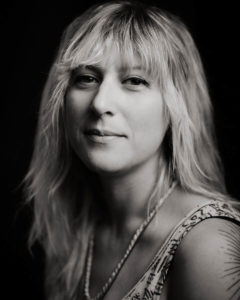 Lisa Elmaleh is an American visual artist, educator, and documentarian based in Paw Paw, West Virginia. She specializes in large-format work in tintype, glass negative, and celluloid film. Since 2007, she has been traveling across the US documenting American landscapes, life, and culture.
Lisa Elmaleh is an American visual artist, educator, and documentarian based in Paw Paw, West Virginia. She specializes in large-format work in tintype, glass negative, and celluloid film. Since 2007, she has been traveling across the US documenting American landscapes, life, and culture.
Born in Miami, Florida (1984), Lisa completed a BFA at the School of Visual Arts in New York in 2007, during which time she was awarded the Silas Rhodes Scholarship. Upon graduating, she received the prestigious Tierney Fellowship to work on a project that evolved into an in-depth visual documentation of the impact of climate change on the Everglades. The culmination of this project resulted in a book titled Everglades published in 2016 by Zatara Press.
Elmaleh’s work has been exhibited nationwide and recognized by the Aaron Siskind Foundation, Puffin Foundation, and The Tierney Foundation, among others. Her work has been published by Harper’s Magazine, Smithsonian Magazine, CNN, The New York Times, National Geographic, Oxford American, Garden & Gun, and NPR, among others.
Lisa travels in a truck containing her bed, and a portable wet plate darkroom. She has a traditional black and white darkroom where she prints in West Virginia.
Anna Grevenitis – “REGARD”
REGARD
/ʁə.ɡaʁ/ verb 1. To consider or think of (someone or something) in a specified way.
When my daughter was born, I was told that she had the “physical markers” for Down syndrome. A few days later, the diagnosis of Trisomy 21 was confirmed with a simple blood test. Today, years later, Luigia is a lively teenager, yet these “markers” have grown with her, and her disability remains visible to the outside world. As we try to go about our ordinary lives in our community–getting ice cream after school, going grocery shopping or walking to the local library–I often catch people staring, gawking, or side-glancing at her, at us. Even though their gaze feels invasive, I perceive it as more questioning than judging, at least most of the time. With this on-going series REGARD, I am opening a window into our reality. To emphasize control over my message, these everyday scenes are meticulously set, lit up; they are staged and posed. The performers are my daughter and me. The double self-portraits are purposefully developed in black and white, for by refusing the decorative and emotionally evocative element of color, I aim to maintain a distance between us and them. The composition of the photographs expresses routine, domestic acts in which I address the viewers directly: look at us bathing; look at us grooming; here we are at bedtime; this is us on a random day at the beach. In each scene, the viewers are plunged into the outside perspective. At first glance, it may seem that I am offering us as vulnerable prey to their judgment, yet in fact I am guarding our lives, and the viewers are caught gawking–my direct gaze at the camera. My series is very basic in its concept: it shows a child, it shows a mother, it shows them living at home, performing familial acts. Because I believe in the connective power offered by the depiction of domesticity, I hope that REGARD helps the audience rethink some of their assumptions about people living with disabilities and with this, I hope my series finds a humble spot within the movement that helps people with disabilities gain visibility.
– Anna Grevenitis
About the artist
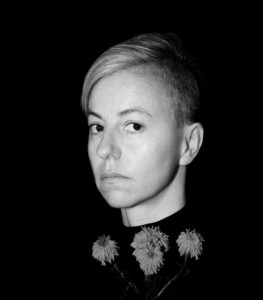 Originally from France, Anna Grevenitis is a photographer based in Brooklyn, NY. Drawing on the experiences of the domestic to inform her daily practice, she uses her home as a stage and her body and the body of others in her familial sphere as characters to deliver, in the photographs, the essence of what she wants to express about family and the self. For her work, the act of performing is an important step in image making. Nowadays she divides her time between research and creation, and she is interested in building long term projects in photography as an act of establishing visual memory and engaging in social visibility. Grevenitis has been exhibited in the United States and internationally. Her series REGARD has been featured in The New Yorker and more recently has been recognized by the Critic’s Choice Award of Lensculture and the Black and White Award of the Lucie Foundation.
Originally from France, Anna Grevenitis is a photographer based in Brooklyn, NY. Drawing on the experiences of the domestic to inform her daily practice, she uses her home as a stage and her body and the body of others in her familial sphere as characters to deliver, in the photographs, the essence of what she wants to express about family and the self. For her work, the act of performing is an important step in image making. Nowadays she divides her time between research and creation, and she is interested in building long term projects in photography as an act of establishing visual memory and engaging in social visibility. Grevenitis has been exhibited in the United States and internationally. Her series REGARD has been featured in The New Yorker and more recently has been recognized by the Critic’s Choice Award of Lensculture and the Black and White Award of the Lucie Foundation.
Andrew Kung – “The All-American”
The All-American II is a photo series that recontextualizes traditional notions of masculinity and belonging. I imagine and construct scenes of strength, intimacy, and togetherness between Asian men that I’ve rarely witnessed in an American context – tender moments that rebel against monolithic constructs of masculinity that have “other-ed” them as weak, undesirable, and not American enough. Just as much in front of the camera, I document my journey of reclaiming my own masculinity through a visual diary of self love – embracing new perspectives and intimate relationships with family, friends, self and dismantling old perspectives that has often compensated for how I viewed my own identity and masculinity. I portray my family, friends, self in spaces deeply personal to me – my current bedroom, my bedroom growing up, parks I used to visit growing up, my current neighborhood – and often times in my own wardrobe, to ultimately reinforce a connectedness with my subjects, my memories, and my journey of self-discovery. The images center on the dignity and diversity of my subjects, my relationship with my subjects, and ultimately my relationship with my own masculinity.
– Andrew Kung
About the artist
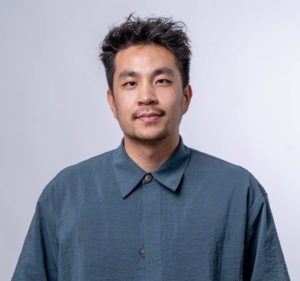 Andrew Kung is a Brooklyn based photographer working across genres to explore themes of race, identity, and belonging. His work imagines tender and intimate moments and recontextualizes how Asian American life is viewed and represented.
Andrew Kung is a Brooklyn based photographer working across genres to explore themes of race, identity, and belonging. His work imagines tender and intimate moments and recontextualizes how Asian American life is viewed and represented.
Andrew’s bodies of work have been featured on Dazed, i-D, Vogue, Artsy, AnOther, NOWNESS, CNN, NBC, and The New York Times and he has worked with selected clients such as Glossier, The New Yorker, L’Officiel, Paper Magazine, Beats by Dre, and HBO.
In 2021, he was one of Adobe’s Rising Stars of Photography, an Adobe Creative Residency Fund Recipient, and a Young Guns 19 Finalist; in 2022, he was a Communication Arts Photography Annual Winner and The One Club for Creativity’s COLORFUL Winner. Outside of making images, Andrew has spoken on ABC Live and has guest lectured at various universities, from School of Visual Arts (SVA) to Fashion Institute of Technology (FIT), Williams College, American University, Smith College, and The School of The New York Times. Prior to his photography journey, he attended UC Berkeley’s business school and worked in Silicon Valley at LinkedIn.
Rania Matar – “Where Do I Go? (Lawen Ruh لوين روح)”
As a Lebanese-born American artist and mother, my work explores personal and collective identity through photographs of female adolescence and womanhood in the United States where I live, and Lebanon where I am from. However, the past three years have been extremely difficult in Lebanon, starting with the 2019 uprising protesting corruption and inflation, to the coronavirus and months of lockdown that proved disastrous for the country, and finally to the August 4, 2020 Port of Beirut explosions, that caused further catastrophic damage. The country has been spiraling into the abyss since, with shortages of cash, gas, electricity, medicine, and water. My focus shifted to Lebanon.
During recent trips to Lebanon, I found hope and inspiration through the younger generation of women. Instead of focusing on destruction, I found myself in awe of them, their creativity, strength, beauty, and resilience, despite all. I felt a sense of urgency in collaborating with them, giving them a voice, and the opportunity and power to express themselves. I found myself focusing on their majestic presence. Every encounter was intense, urgent, and meaningful. The need to hold on to creativity and self-expression felt more important than ever. We were creating the stage together to tell the story – her individual story and our collective story.
I saw graffiti on the wall that said in Arabic: “Where do I go” (lawen ruh لوين روح)? These women are at that crossroad. Where do they go? I was their age when I left Lebanon in 1984 during the Civil War. Some are leaving; others cannot afford to go anywhere. I want to empower them and tell their story through collaborative portraiture.
This work is in progress. Looking at the images I have made so far, I am absolutely convinced that, despite the current very tough situation, the creativity and resilience of this young generation of women will prevail.
This project is for them and for us: the ones who are staying and the ones who have left.
– Rania Matar
About the artist

Born and raised in Lebanon, Rania Matar moved to the U.S. in 1984. As a Lebanese-born American woman and mother, her cross-cultural experience and personal narrative inform her photography.
Matar’s work has been widely exhibited in museums worldwide in solo and group exhibitions, including the Museum of Fine Arts, Boston, Carnegie Museum of Art, National Museum of Women in the Arts, Minneapolis Institute of Art, Fotografiska, and more. It is part of the permanent collections of several museums, institutions, and private collections. A mid-career retrospective of her work was recently on view at Cleveland Museum of Art, Amon Carter Museum of American Art, and the American University of Beirut Museum.
In 2023, she will have 2 solo museum exhibitions of her recently published series SHE at the Huntsville Museum of Art and the Fitchburg Museum of Art. Her images will also be part of a traveling exhibition about Women Artists from the Middle East that opens at LACMA (Los Angeles County Museum of Art).
Matar received 2022 Leica Women Foto Project Award, 2018 Guggenheim Fellowship, 2017 Mellon Foundation artist-in-residency grant, 2021, 2011, 2007 Massachusetts Cultural Council Artist Fellowships, 2011 Griffin Museum of Photography Legacy Award. She is a finalist for the Outwin Boochever Portrait Competition with an exhibition at the Smithsonian National Gallery of Art. In 2008 she was a finalist for the Foster Award at the ICA/Boston, with an accompanying solo exhibition.
She published four books:
SHE, 2021; L’Enfant-Femme, 2016; A Girl and Her Room, 2012; Ordinary Lives, 2009.
Robert Andy Coombs – “CripFag”
CripFag is a visual exploration of my sexual and intimate adventures. Being a disabled gay male in today’s society, it’s extremely rare that I find visual representations of people like me in any type of media. Therefore, I decided to take matters into my own hand and create the images I wanted to see in the world. I explore themes of the disabled body, caregiving, fetish, romance, intimacy, sex, and isolation. The images are visual representations of fantasy and everyday life. I created these images to inspire others to fully accept their disabled bodies and feel sexy and worthy of intimate relationships while educating a world that ignores us.
– Robert Andy Coombs
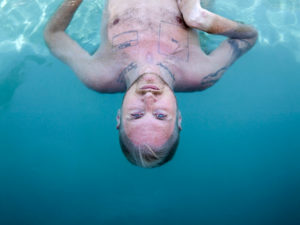 Robert Andy Coombs grew up in Michigan’s majestic Upper Peninsula where he spent his childhood roaming the great outdoors. He started photographing his walkabouts in middle school and moved on to portraiture in high school. Coombs received a scholarship to Kendall College of Art and Design in Grand Rapids Michigan. During his third year in undergrad, Coombs’ sustained a spinal cord injury due to a gymnastics training accident. After a year of recovery, he returned to KCAD and received his BFA in photography in 2013. Coombs’ photography explores the intersections of disability and sexuality. Themes of relationships, caregiving, fetish, and sex are depicted and explored throughout. Coombs graduated from the Yale School of Art amidst the COVID-19 pandemic and is currently residing in sunny Miami Florida.
Robert Andy Coombs grew up in Michigan’s majestic Upper Peninsula where he spent his childhood roaming the great outdoors. He started photographing his walkabouts in middle school and moved on to portraiture in high school. Coombs received a scholarship to Kendall College of Art and Design in Grand Rapids Michigan. During his third year in undergrad, Coombs’ sustained a spinal cord injury due to a gymnastics training accident. After a year of recovery, he returned to KCAD and received his BFA in photography in 2013. Coombs’ photography explores the intersections of disability and sexuality. Themes of relationships, caregiving, fetish, and sex are depicted and explored throughout. Coombs graduated from the Yale School of Art amidst the COVID-19 pandemic and is currently residing in sunny Miami Florida.
Sarah Cooper & Nina Gorfer – “Between These Folded Walls, Utopia”
BETWEEN THESE FOLDED WALLS, UTOPIA
“If a particular society’s cultural world, the dreams that have guided it to a certain point, become dysfunctional, the society must go back and dream again.” Thomas Berry
What do you hold close? If you had to leave everything behind and begin again, who would you be? Humanitarian tragedies caused by wars and the all-encompassing effects of climate change keep unfolding. The danger now is, will we stop trying to imagine a better world? Struck by this realisation, that we are living within a loss of Utopia, Cooper & Gorfer reached out to their local communities and interviewed young women whose lives have, in one way or another, been ruptured by the effects of forced migration. They asked them about their identity and their secret places of longing.
Between These Folded Walls, Utopia emanates from the current political reality. With a deep interest in the human story, the artists imagine a utopian theatre, reminding us that we are all caught in the imaginary world of our own interpretations and cultural conditioning. The protagonists in Cooper & Gorfer’s portraits, are drawn from this new diaspora – a young generation of women who have experienced what it means to uproot their lives and sense of self. They are photographed like goddesses, surrounded by an entourage of helpers. The vivid portraits are a judicious and of-the-moment examination of our historical memory and possibility.
But the exhibition extends far beyond portraiture. The artists invite us to partake in their utopian theatre – a continuous play of surfaces and woven structures of architecture and nature, where we find ourselves caught in an unending enclosed space of walls, gardens and doorways. Inspired by the multi-layered and non-linear narratives of Jorge Luis Borges’ Labyrinths, Cooper & Gorfer simulate architectural elements that were once built with utopian intentions. The women inhabiting this illusionary world are integrating themselves in and cutting themselves out of this labyrinthian coulisse, adorned with a small array of personal items from former lives. With the use of naïve cuts and collage elements, Cooper & Gorfer construct various layers of physicality, acting like the many layers of backdrops on a theatre stage. The artists question what cultural symbols and artefacts are we measuring ourselves against, and how do they influence our time and identity.
The resulting series carves out a space for a traditionally marginalised group. By reclaiming Utopia for this group of women, Cooper & Gorfer challenge the concept of the philosophical and historical Utopias of the past. The women photographed are revealing their projected future selves in an elaborate tableaux. This is a world where anything seems possible; where the seemingly surreal transforms into something utterly believable. Caught in a constant maze of walls and projected realities, each girl’s environment may be built, torn down and rebuilt differently. Inviting both the subject and the viewer to experience the transcendental.
Are we living in a loss of Utopia? And if so, who’s Utopia is it that we have Lost?
– Sarah Cooper & Nina Gorfer
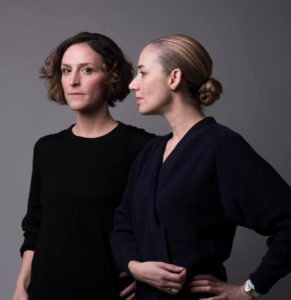 Cooper & Gorfer comprises the artists Sarah Cooper (US, SE, 1974) and Nina Gorfer (AT, 1979). Their work centers around themes of illusion, memory and dislocation, illustrating the malleability of identity through layered pictorial collages of the female experience.
Cooper & Gorfer comprises the artists Sarah Cooper (US, SE, 1974) and Nina Gorfer (AT, 1979). Their work centers around themes of illusion, memory and dislocation, illustrating the malleability of identity through layered pictorial collages of the female experience.
The artist duo is known for their distinct hybrid portraits of women and immersive worlds with socio-political undertones. With a point of departure in photography, their work ranges from physically layered collages with painted and embroidered materials, to photographs of disassembled images in different states of ephemeral montage. The complexities of their subjects are reflected in the process and the fragmentation of the artwork’s surfaces.
Sarah Cooper and Nina Gorfer reimagine the tradition of portraiture by visually examining and deconstructing the narrative layers of those they portray. As much audience as creators, the artists’ own experiences are intertwined with that of the protagonist, resulting in images in which several epochs are simultaneously present. Like art history’s Mannerists and Surrealists, Cooper & Gorfer strain observable reality through a filter of memories, moods and wounds.
Cooper & Gorfer began their collaboration in 2006. They live and work in Sweden. Their artwork has been widely exhibited at museums including: Hasselblad Center, NOMA New Orleans Museum of Art, Nuuk Art Museum in Greenland, The National Museum of Photography Copenhagen, and Fotografiska, amongst others. Alongside their artwork, Cooper & Gorfer design accompanying monographs. They have been awarded the German Photo Book Award in 2018 for their book I Know Not These My Hands (2017 Kehrer Verlag).
Matt Eich – “Bird Song Over Black Water”
The song contained many songs. . .
Help me to lie low and leave out,
Remind me that vision is singular, that excess
Is regress, that more than enough is too much, that
compression is all”
from “Meditation on Song and Structure”
by Charles Wright
“Bird Song Over Black Water” is an ongoing body of work made in my home state of Virginia that will span a decade when complete. The series incorporates portraiture, still lives, and landscapes, but at the emotional core of the work is my desire to share small intimacies with people. While photography is limited to light on surface, I am interested in what lies below the surface of an individual and strive to make images that evoke a psychological space. To achieve this, I work in a collaborative manner, engaging with individuals to visually represent them as they wish to be seen.
The way I make work is largely intuitive. My subconscious only a few steps ahead of my conscious mind on a path to the questions I seek. I trust the images to guide me towards a clear vision one-to-the-next. My faith in the photographic medium frequently tested, I still believe it can expand our capacity for empathy. Belief alone rescues me from despair.
Depicting those I encounter with intimacy and respect, I consider the weight of our troubled colonialist past, and how it has led to the isolation and division of the present, while trying to illuminate our collective hopes for the future. The images I make subconsciously sway between the elemental, the spectacle, and the intimate. It is in this space I intend to continue working.
– Matt Eich
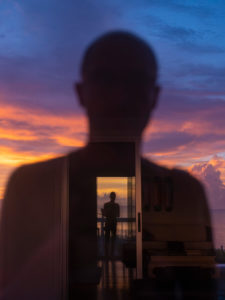 Matt Eich is a photographic essayist working on long-form projects related to memory, family, community, and the American condition. He is the author of four monographs of photography and his work is widely exhibited and held in numerous public collections. Matt’s projects have received support from an Aaron Siskind Fellowship, two Getty Images Grants, a VMFA Professional Fellowship and an Aperture/Google Creators Lab Photo Fund Grant. He was an artist in residence at Light Work in 2013 and at a Robert Rauschenberg Residency in 2019. Eich is an Assistant Professor at the George Washington University, lives in Virginia and makes books under the imprint Little Oak.PRESS.
Matt Eich is a photographic essayist working on long-form projects related to memory, family, community, and the American condition. He is the author of four monographs of photography and his work is widely exhibited and held in numerous public collections. Matt’s projects have received support from an Aaron Siskind Fellowship, two Getty Images Grants, a VMFA Professional Fellowship and an Aperture/Google Creators Lab Photo Fund Grant. He was an artist in residence at Light Work in 2013 and at a Robert Rauschenberg Residency in 2019. Eich is an Assistant Professor at the George Washington University, lives in Virginia and makes books under the imprint Little Oak.PRESS.
Sam Geballe – “Self-Untitled”
In 2014, I had gastric bypass and my life radically changed. Most of my excess weight lifted within a year. The changes were drastic. Daily function was unbelievably easier. I could breathe, but I was devastated to learn I had no idea who I was.
Fear quickly filled the space where my body had been. My walls were gone. I did not know how to respond to others. I often reacted as if I were still in a bigger body.
For years, I believed I had to apologize for having been big, the space I occupied, and food I ate by making myself small. I leveraged my past as reason why I should not eat or trust others, including me. I was afraid I would lose control, lose my breath, and lose myself. Despite the challenges, I do not regret surgery.
It is difficult for me to believe these images are self-portraits. Some are distant and unrecognizable. Separation is a defense I use to avoid past pain but avoiding pain forces me to keep it. It is not a key to good living.
I started Self-Untitled to help alleviate shame I had for my body, build connection, and humanize myself to others. That is still true, but now, self-portraiture is also a way I process and visualize life. It is a practice of self-forgiveness and acceptance. A daily conversation and reminder that I deserve to take up space. I do not need to apologize for my existence.
– Sam Geballe
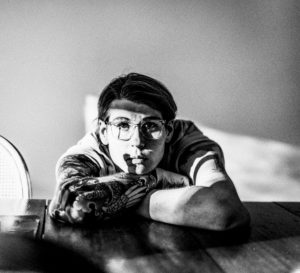 Sam Geballe is an artist living and working in the San Francisco Bay Area. Sam’s involvement in art began in early childhood, and they have frequently used creative expression as a means of communication and connection to their self and others.
Sam Geballe is an artist living and working in the San Francisco Bay Area. Sam’s involvement in art began in early childhood, and they have frequently used creative expression as a means of communication and connection to their self and others.
In 2013, Sam began work on a self-portrait series, Self-Untitled. The series explores themes of body-image, memory, gender, trauma, and healing. In addition to photographs, Sam incorporates bookmaking, drawing, filmmaking, and music composition. They continue their self-portraiture work as a daily practice and ongoing memoir.
Sam uses the pronouns they/them/theirs and identifies as trans, gender-queer.
David Lombeida – “Resistencia”
“If necessary, we’ll fight to the death…because we have to win this one way or another. No matter how long it takes, you have to win,” said Rayito whose unflinching gaze is like that of many protesters involved in the Colombian national strike.
Over the course of the pandemic, nearly half of Colombians fell below the poverty line, spurring the country’s most significant uprising in 40 years. While a tax reform was introduced to provide economic relief, it actually raised the prices of common goods, hitting disenfranchised communities hardest. As a result in early 2021, massive anti-government strikes broke out against the reform and widespread corruption. The police response to these demonstrations led to numerous deaths, beatings, injuries, and disappearances. According to local NGOs Indepaz and Temblores, 83 people were killed with half allegedly committed by police officers.
Colombia’s police force is one of few in the world that falls under the Ministry of Defense, and the anti-rioting squad sees conflict through the lens of warfare. David Arteaga, who was shot with a tear-gas canister aimed at his head—a common occurrence during the strike—said it was fired from such a short distance that it’s something the police use as a direct attack. The impact crushed his skull, leaving an indentation where the bone was shattered, nearly killing him, and requiring intensive neurosurgery.
However, others were not as lucky. For example, Dolores’s son Duban went missing in June of last year during a protest in Bogotá and was later found dead with signs of abuse. “That boy was my everything. There are days that I don’t want to keep going. I don’t want to keep fighting” she says.
My project “Resistencia” features portraits of protestors who are survivors of police violence and trauma or who have suffered the loss of a loved one. From mothers who lost their sons to permanently disabled young men, to people who were kidnapped, beaten, and tortured, each person holds an item that signifies the challenges they’ve faced by opposing the government. While everyone holds something different and unique to their story, all have one thing in common: a deep belief in change for Colombia’s future. “When tyranny becomes law, rebellion becomes duty” is a slogan chanted and written on signs by hundreds.
Major political shifts are occurring throughout South America, such as Chile’s recent progressive presidency and the rewriting of their constitution as well as Peru’s president running as a socialist candidate. This June for the first time in the nation’s history, Colombia elected a progressive president, filling the streets with people celebrating among tears of joy—a far cry from the previous year when protestors risked their lives to stand against government corruption. “Resistencia” is a portrait of the courage and strength of those willing to die for their country.
– David Lombeida
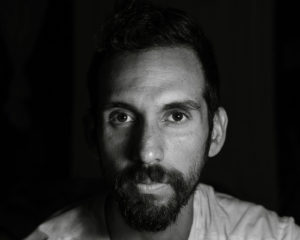 David Lombeida is a freelance documentary photographer and filmmaker focusing on the effects of conflict, migration, and identity on communities throughout the world in intimate ways and creates initiatives to give back to those he’s privileged to work with. For example, as part of his work photographing the national strike in Colombia, he also created a documentary about protestor Nicolás Guerrero, who was killed by police. With the help of Nicolás friends and family, David screened the film for his community on the one-year anniversary of his death.
David Lombeida is a freelance documentary photographer and filmmaker focusing on the effects of conflict, migration, and identity on communities throughout the world in intimate ways and creates initiatives to give back to those he’s privileged to work with. For example, as part of his work photographing the national strike in Colombia, he also created a documentary about protestor Nicolás Guerrero, who was killed by police. With the help of Nicolás friends and family, David screened the film for his community on the one-year anniversary of his death.
David’s work has been featured in the Washington Post, Bloomberg, Reuters, and CNN, among other publications. He is also an alumnus of the Eddie Adams Workshop XXXIV , where he won the South American Bloomberg Assignment Award, which helped jumpstart his career.
David’s interests involve exploring human connection, and his aim is to make the viewer confront humanity living on the margins of society. His goal is to continue to create intimate stories that are relatable to the viewer, which allows them to see a human being before anything else and gain valuable insight through his work.
Rebecca Moseman – “The Irish Travelers: A Forgotten People”
The Irish Travelers are an insular ethnic group that has lived on the fringes of mainstream Irish society for centuries. They live an itinerant lifestyle, with long traditions and gender-based roles that have been passed down from generation to generation. Sons commonly take over jobs or enter trades their fathers and grandfathers have practiced for hundreds of years. Daughters are encouraged to marry early, and families with eight to twelve children are not uncommon. Discrimination is widespread, school dropout rates are high, domestic violence is rampant, and suicides are increasing.
Yet the lives of the Travelers are changing in many positive ways. Their families are finding it easier to live in government-serviced halting sites rather than continue their nomadic lifestyles. Teenagers are trying harder to stay in school, graduate, and pursue careers outside the Traveler community. Young women are waiting longer to marry and have children. Bit by bit, for better or worse, the Travelers are being assimilated.
My Irish Travelers series is ongoing, starting in 2017. I have been back two other times since then to continue my project. One of the greatest joys is the opportunity to revisit families I had previously photographed, and meet new travelers and their families. The travelers are a proud community and are eager to have their stories told to not only the settled Irish but people outside of Ireland. They feel they have not only been treated and regarded unfairly, but misunderstood, and misrepresented by their fellow countrymen.
Although the Travelers have had a reputation for violence and criminal behavior, I found them to be generally friendly, approachable and tragically misunderstood. I think that it is important to document the Travelers as we know them today, to collect a photographic record of a unique people and their traditions before they disappear.
– Rebecca Moseman
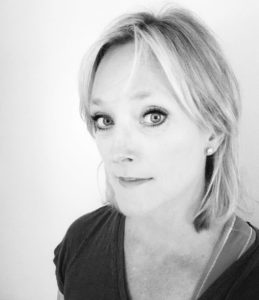 Virginia native Rebecca Moseman received her Bachelor of Fine Arts from Virginia Polytechnic Institute in 1997 and her Master of Fine Arts from Rochester Institute of Technology in 2001. She has worked in academia, private industry, and Government as an instructor, consultant, and graphic designer and does freelance work in photography and publishing. Her work has been exhibited throughout the US and abroad and has been selected on the cover of Black+White Magazine, and featured in Black & White Magazine, GUP, Resource, DodHo, and SHOTS Magazine. She has been selected for Critical Mass Top 50 in 2018 and 2019 and was an Eddie Adams Workshop XXX11 participant. Her photography has won 2019 APA Best of Show and the 2019 Gomma Grant Best Black and White Documentary work.
Virginia native Rebecca Moseman received her Bachelor of Fine Arts from Virginia Polytechnic Institute in 1997 and her Master of Fine Arts from Rochester Institute of Technology in 2001. She has worked in academia, private industry, and Government as an instructor, consultant, and graphic designer and does freelance work in photography and publishing. Her work has been exhibited throughout the US and abroad and has been selected on the cover of Black+White Magazine, and featured in Black & White Magazine, GUP, Resource, DodHo, and SHOTS Magazine. She has been selected for Critical Mass Top 50 in 2018 and 2019 and was an Eddie Adams Workshop XXX11 participant. Her photography has won 2019 APA Best of Show and the 2019 Gomma Grant Best Black and White Documentary work.
Register your interest below and we will let you know when the 2024 Arnold Newman Prize call for entries is open:
By submitting this form, you are consenting to receive marketing emails from: . You can revoke your consent to receive emails at any time by using the SafeUnsubscribe® link, found at the bottom of every email. Emails are serviced by Constant Contact
Adriana Letorney
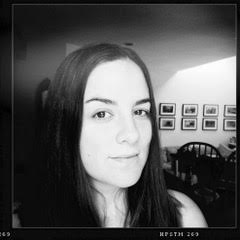 Adriana Letorney is the Founder & CEO of Visura.co, a startup that is re-envisioning the future of work and marketplace for visual content in media and journalism.
Adriana Letorney is the Founder & CEO of Visura.co, a startup that is re-envisioning the future of work and marketplace for visual content in media and journalism.
She is also Co-founder at Scout Film Festival, a 501c3 non-profit organization that celebrates, connects, and empowers filmmakers worldwide aged 24 and under.
Currently, she is an NYU Female Founder Fellow and Founder in Residence at the NYU Entrepreneurial Institute’s Leslie eLab.
As a writer, she has contributed to numerous publications, including The New York Times, and Huffington Post. As a juror, nominator, and/or reviewer, she has served for the Alexia Grant at the University of Syracuse, World Press Photo, Prix Pictet, CPOY, The New York Portfolio Review (2011-present), Northern Course Short, New York Photo Awards, The Google Photography Prize, Photoville’s ‘The Fence’, amongst many others.
Adriana has been a panelist and guest lecturer at the Fashion Institute of Technology, Missouri School of Journalism, The S. I. Newhouse School of Public Communications at Syracuse University, Photo Plus Expo, The School of Visual Arts, and The New School in NY.
Numerous publications have highlighted her career, including The San Francisco Chronicle, The New York Times, PDN, NY Daily News, The Daring Magazine, SevenDays, amongst others.
Rashod Taylor
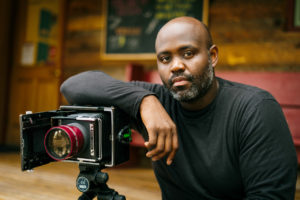 Rashod Taylor (b.1985) is a contemporary photographer whose work is a window into the Black American experience. Taylor attended Murray State University and earned a bachelor’s degree in Art with a specialization in Fine Art Photography. Most recently his work was acquired by the Museum of Fine Arts Houston for his series Little Black Boy. He is also the 2021 recipient of the Arnold Newman Prize For New Directions in Photographic Portraiture. Taylor is working on a series, Little Black Boy. He documents his son’s life and his own anxieties of fatherhood in the face of a society confronting enduring prejudice, injustice, and racism. In this ongoing longform project, Taylor addresses themes of family, race, culture and legacy through portraiture.
Rashod Taylor (b.1985) is a contemporary photographer whose work is a window into the Black American experience. Taylor attended Murray State University and earned a bachelor’s degree in Art with a specialization in Fine Art Photography. Most recently his work was acquired by the Museum of Fine Arts Houston for his series Little Black Boy. He is also the 2021 recipient of the Arnold Newman Prize For New Directions in Photographic Portraiture. Taylor is working on a series, Little Black Boy. He documents his son’s life and his own anxieties of fatherhood in the face of a society confronting enduring prejudice, injustice, and racism. In this ongoing longform project, Taylor addresses themes of family, race, culture and legacy through portraiture.
Large and medium format process favored by the Artist is a contentious nod to the gravity of content and intention of frame. This format also disarms subjects by slowing time and heightens tension by raising intimacy.
Taylor’s editorial clients include National Geographic, Essence Magazine, ProPublica, Buzzfeed News, among others. His work has also been featured in CNN, The Atlantic, FeatureShoot and Lenscratch.
Rashod Taylor lives in Springfield MO, with his wife and son. Rashod was the winner of the 2021 Arnold Newman Prize.
Ellen K. Willas
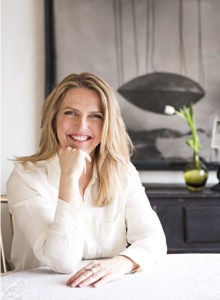 Ellen K. Willas (Born in Hammerfest, Norway 1967) is a Norwegian curator and art dealer based in Stockholm. Ellen K has served as juror on photo competitions such as LensCulture, Fotografi Portfolio Award, Gullsnitt and The Photographers Giving Back Award. She acted as artistic director of Risør Fotofestival in Norway. Between 2012 – 2021, Willas curated museum exhibitions in collaboration with Fotografiska in Stockholm and Tallinn for artists such as Roger Ballen, Sally Mann, Joyce Tenneson and Arno Rafael Minkkinen.
Ellen K. Willas (Born in Hammerfest, Norway 1967) is a Norwegian curator and art dealer based in Stockholm. Ellen K has served as juror on photo competitions such as LensCulture, Fotografi Portfolio Award, Gullsnitt and The Photographers Giving Back Award. She acted as artistic director of Risør Fotofestival in Norway. Between 2012 – 2021, Willas curated museum exhibitions in collaboration with Fotografiska in Stockholm and Tallinn for artists such as Roger Ballen, Sally Mann, Joyce Tenneson and Arno Rafael Minkkinen.
She founded WILLAS contemporary in Oslo in 2015. The Gallery was rated top 3 among Norwegian galleries and museums and presents museum-like solo exhibitions with artists mentioned above + Jeff Cowen, Jimmy Nelson, Helene Schmitz and Nick Brandt to name a few. WILLAS contemporary later transformed into showrooms in Oslo and Stockholm, and now participates in art fairs and pop up exhibitions.
During the pandemic, Willas initiated and facilitated the benefit auction 20 21 Artists in Support of Human Rights Watch in 2021 : 41 works from established and emerging artists commenting on the current state of the world were auctioned on ARTSY. A truly global, diverse group of artists deployed a variety of mediums, including photography, textile, sculpture, and more.
All images are subject to copyright.

